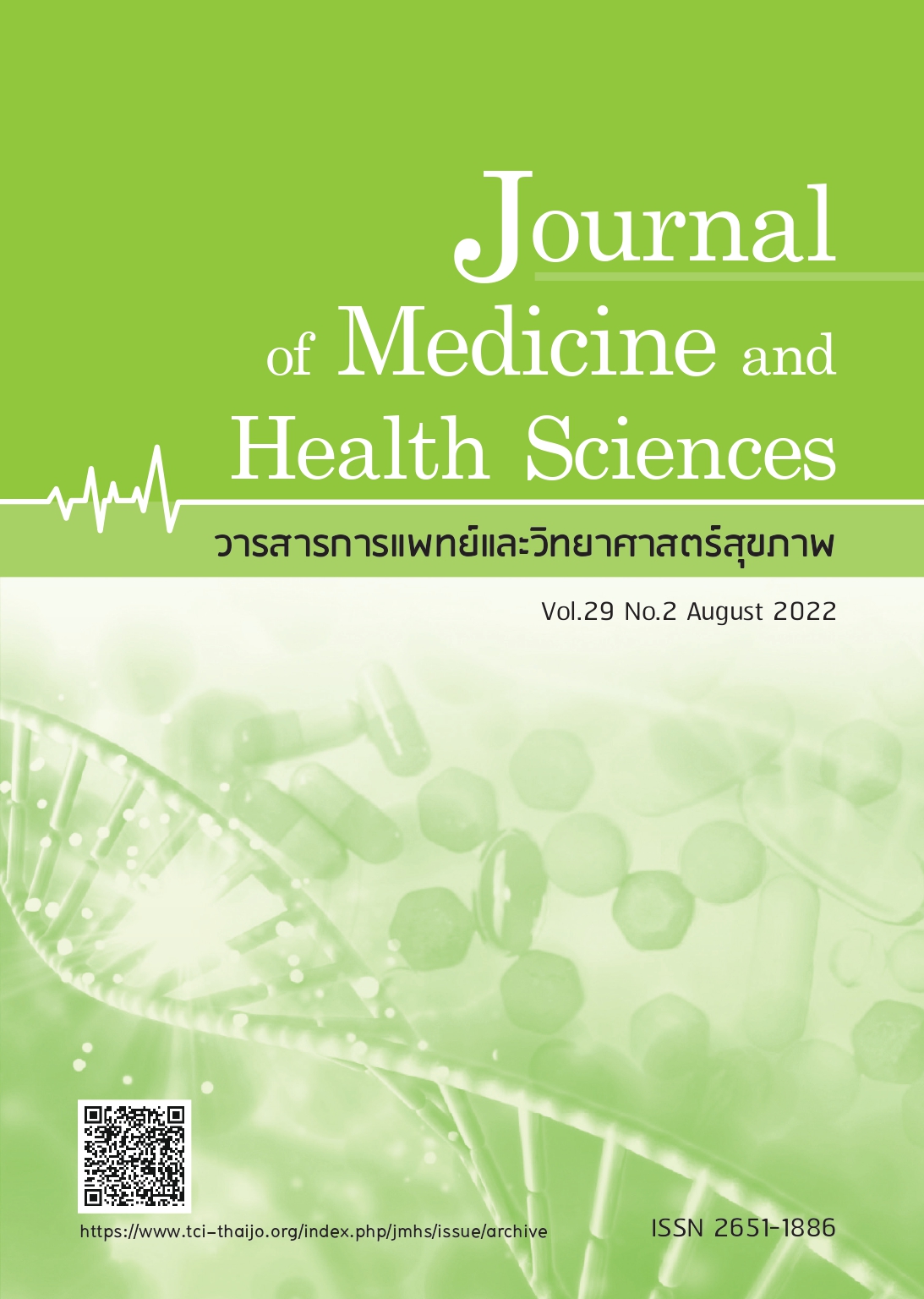Hearing capacity and noise hazard preventive behaviors: a study of the existing audiograms in high-risk health care workers with noise-induced hearing loss
Keywords:
audiograms, hearing capacity, health care workers, noise hazard preventive behaviorsAbstract
Abstract
Regular exposure to noise pollution is also one of the risk factors that increase the risk of hearing loss among health care workers. Therefore, the aim of this study was to assess hearing capacity, noise hazard preventive behaviors, and to determine the association between the working data and noise hazard preventive behaviors. A cross-sectional study was conducted from 1 October 2019 to 30 September 2020. This study was conducted to evaluate the hearing threshold level using pure tone audiometry test and face-to-face questionnaires among 70 high-risk health care workers with noise-induced hearing loss in six departments in a tertiary hospital. The data were analyzed by descriptive statistics and Fisher’s exact test was used to analyze the factors related to noise hazard preventive behaviors. The results revealed that the audiometric tests of 14/70 health care workers were abnormal. Half of the healthcare workers (34/70) did not use hearing protection devices. Most health care workers (23/36) intermittently used earplugs during the activity. Work experience was significantly related to noise hazard preventive behaviors (p=0.001). However, the age of health care workers, underlying disease, work experience, and the use of hearing protection devices was not statistically associated with hearing loss. Half of the healthcare workers did not consistently use hearing protection devices. Therefore, to reduce the risk of noise hearing loss among health care workers. Therefore, it should be promoted and programmed for an increased awareness of the use of hearing protection devices.
References
Basner M, Babisch W, Davis A, et al. Auditory and non-auditory effects of noise on health. Lancet 2014;383(9925):1325-32.
Hammer MS, Swinburn TK, Neitzel RL. Environmental noise pollution in the United States: developing an effective public health response. Environ Health Perspect 2014;122(2):115-9.
Geravandi S, Takdastan A, Zallaghi E, et al. Noise pollution and health effects. Jundishapur J Health Sci 2015;7(1):e25357.
Swinburn TK, Hammer MS, Neitzel RL. Valuing Quiet: an economic assessment of U.S. environmental noise as a cardiovascular health hazard. Am J Prev Med 2015;49(3):345-53.
Mariconte R, Giliberti C, Cavuto C, Strigari L. Noise in healthcare facilitaties 2015.
Juang DF, Lee CH, Yang T, et al. Noise pollution and its effects on medical care workers and patients in hospitals. Int J Environ Sci Technol 2010;7(4):705-16.
Mousavi SA, Sohrabi P. A comprehensive evaluation of the level of noise pollution in hospitals of kermanshah university of medical sciences 2018.
Worawonnotai C, Wacharasindhu C. Hearing level and occupational noise exposure among workers in Bhumibol Adulyadej hospital, RTAF. Royal Thai Air Force Medi Gaz 2009;55(2).
Fontoura FP, Gonçalves CGdO, Lacerda ABMd, et al. Noise effects on hospital laundry workers' hearing. Rev CEFAC 2014;16:395-404.
Alabdulwahhab BM, Alduraiby RI, Ahmed MA, et al. Hearing loss and its association with occupational noise exposure among Saudi dentists: a cross-sectional study. BDJ Open 2016;2:16006.
Khaimook W, Suksamae P, Choosong T, et al. The prevalence of noise-induced occupational hearing loss in dentistry personnel. Workplace Health Saf 2014;62(9):357-60.
Myers J, John AB, Kimball S, Fruits T. Prevalence of tinnitus and noise-induced hearing loss in dentists. Noise Health 2016;18(85):347-54.
Alzahrani RA, Alzahrani AO, Alghamdi AA, et al. Knowledge, behaviors, and attitudes about noise-induced hearing loss among adults in Albaha region: a cross-sectional study. Egypt J Hos Med 2018;70(5):824-7.
Coles RR, Lutman ME, Buffin JT. Guidelines on the diagnosis of noise-induced hearing loss for medicolegal purposes. Clin Otolaryngol Allied Sci. 2000;25(4):264-73.
Siriboonyarith A, Phuempoonphol D, Sonsooth S, et al. Hearing level and Occupational Noise Exposure among workers in Chonburi Hospital. Chonburi Hosp J 2550;(32): 103-10. (in Thai)
Jampatthanakij P. Prevalence and risk factors associated with noise-induced hearing loss among high-risk health care workers in Pakchongnana Hospital. Reg 11 Med J 2561;32(2): 981-92. (in Thai)
Thepaksorn P, Siriwong W, Neitzel RL, et al. Relationship between noise-related risk perception, knowledge, and the use of hearing protection devices among para rubber wood sawmill workers. Saf Health Work 2018;9(1):25-9.
LaDou J. Current diagnosis & treatment occupational & environmental medicine 5th ed. New York: McGraw-Hill. 2014.
Downloads
Published
How to Cite
Issue
Section
License

This work is licensed under a Creative Commons Attribution-NonCommercial-NoDerivatives 4.0 International License.



